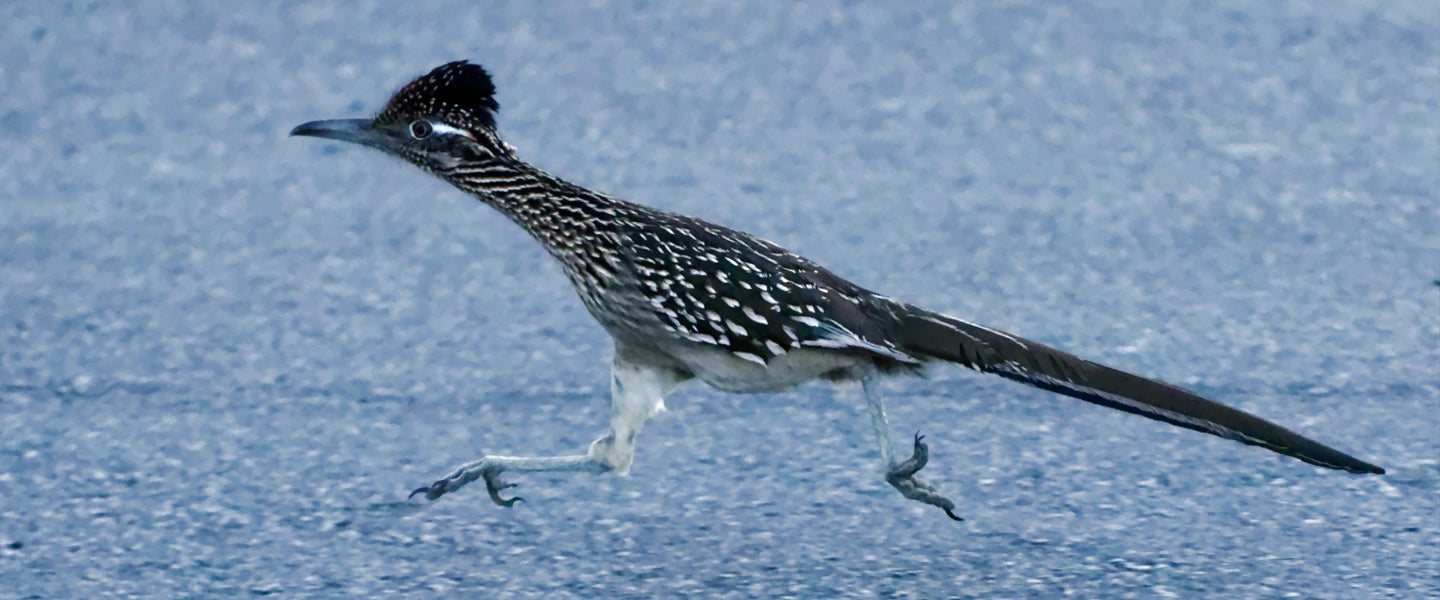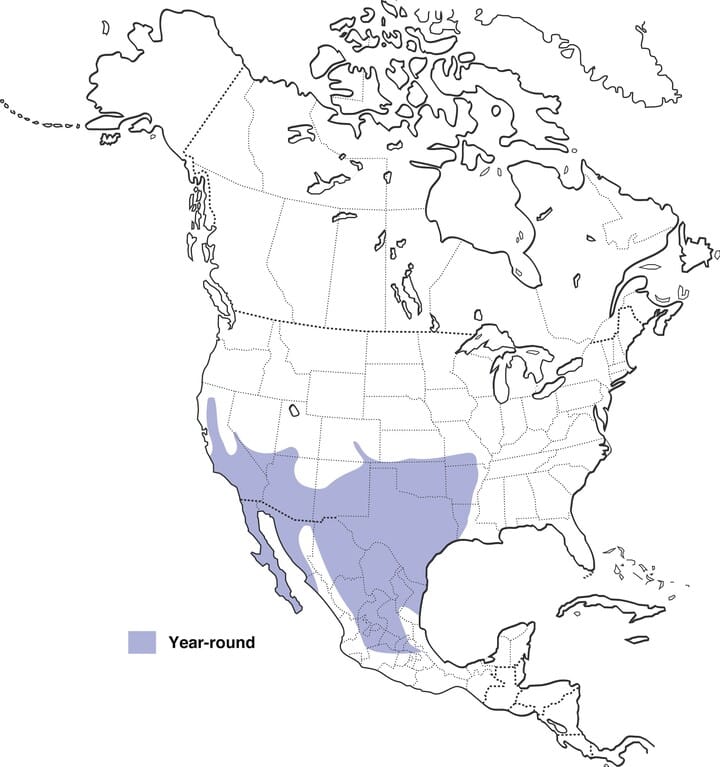Since 1949, Wile E. Coyote has been going at this thing non-stop. To catch that tasty-looking Roadrunner, he’s tried catapults, bat suits, rocket-powered roller skates, a DIY tornado kit, countless explosives and even straight-up steroids, but he’s still no closer to his goal. After seven decades of pursuit, you have to wonder, why does the coyote want him so bad? I mean, what does roadrunner meat even taste like?

Since I’m obviously not going to find out from this worryingly inept coyote, my very important investigation is going to have to start another way. The logical place to start is obviously to Google “what does roadrunner taste like?.” So I do, and after sifting through tons of stuff about the Looney Tunes cartoons I strike gold — a farm selling roadrunners to eat! The pictures on the Facebook page show chickens, but I figure that’s just one of the things the farm raises in addition to yummy little roadrunners, which, by the way, actually look like this:

I quickly get in touch with the farmer and set up a time to talk, at which point I find out that he’s in Mozambique. Immediately, my “I’m a big dumb-dumb” alarm bells start to ring: What the heck is an American desert bird doing in East Africa? After going back and forth with the farmer for over an hour, then digging into a bit more research online, I discover that, in Africa, another word for free-range chickens is “roadrunner chickens.” This explains both why there is a roadrunner farm there, and why there are photos of chickens all over the guy’s Facebook page. Damn it.

Thus, I return to Google to see if anyone has eaten roadrunner, which they haven’t. I do find out that some native tribes of the Americas believed that eating roadrunner meat granted them the ability to run faster, but that’s not terribly helpful.
Eventually it occurs to me to perhaps try survival experts of the American deserts, because maybe they’ve had to eat one in their travels. But the three that respond have not eaten roadrunner, and with good reason: As Cody Lundin, founder of the Aboriginal Living Skills School, tells me, “Roadrunners, like most birds, are a protected species under the Migratory Bird Treaty Act via the U.S. Fish and Wildlife Service. Killing one can get a person into a lot of trouble.”
Which is why a game hunter I reached out to also replied to me by saying, “You do realize it is a crime to kill a roadrunner, yes? I want no part of that. Sorry.” Even after I explain to him that the piece is more about the Looney Tunes shorts and that no idiot is going to read my article and actually go eat a roadrunner (you’re not, right?), he still refuses.

Anyway, Lundin has never eaten a roadrunner, and neither has John Campbell, better known as the “Arizona Bushman,” a famed author, knife-maker and survival expert. “I haven’t ever eaten any predatory birds,” he tells me.
The third survival dude I talk to is Thomas Coyne of California’s Thomas Coyne Survival Schools and he’s also never feasted on roadrunner, though he says that they do live in the same area as him. When I ask him if he’s ever had anything similar, he explains, “I’ve never seen a bird that eats as much meat as they do — they hunt rattlesnake and mice and all that stuff, so it would be more like eating a hawk or an eagle” (two birds that he also hasn’t eaten, as they’re similarly protected).
Given that I’ve got him on the phone, I do ask Coyne how one might catch a roadrunner, just to see what the coyote should have been doing all these years. He says that a “box trap” or a “snare trap” should work, and though I don’t at first know what either of those things are, it turns out that I also learned about them via cartoons: A box trap is the one with a box where you pull the stick out from under it when the animal is inside, and a snare trap is the one with the rope in the tree. (Cartoons, as it turns out, have provided me with much of my education.)

Not yet ready to give up on the taste of roadrunner, I decide to look a little deeper into that whole thing about the indigingeous tribes that ate them. I soon find a newspaper article from 1984 that reads:
“Mexican curanderos, or folk healers, prescribe roadrunner meat as a medicine in recognition of the bird’s formidable ability to ingest poisonous animals. Curanderos believe tuberculosis can be cured by eating a stew of roadrunner meat, onions, tomatoes and garlic. The elixir is also good for backaches, itches, boils, lung problems and leprosy.”
Despite this providing a recipe for roadrunner, it still doesn’t tell me what it actually tastes like. The next step then, clearly, is to find a curandero, though not being able to speak Spanish is a major hurdle: After striking out on Twitter and Facebook, I briefly try working with a pay-by-the-minute shaman, but after giving the website my phone number, I get texts that seem disconcertingly bot-like:

I cut my losses after it asks me about “symptoms” for no apparent reason, and even though, by this time, I would have paid handsomely to find out about the taste of roadrunner, I turn instead to more authentic sources, namely, Elisio “Cheo” Torres of the University of New Mexico, an expert in curanderismo (Mexican folk healing), and the author of Curandero: A Life in Mexican Folk Healing. Torres tells me that he’s not heard of curanderos using roadrunner meat, though as a child growing up on the Texas/Mexico border, he’d heard from his father that roadrunner meat had been prescribed for sores, though he himself had never eaten it.
He also gives me the number for an English-speaking curandera, but when I talk to her on the phone, she says that she’s unfamiliar with the healing powers of the roadrunner and that she certainly hasn’t eaten one.
Torres also emails me later, explaining, “I just phoned my curandera colleague in Mexico City, Rita Navarette, and she told me that in the past, rural moms would boil the roadrunner and make a soup. The women who had given birth would bath babies with skin irritations with the soupy water. Mom would eat the soup, which would help when nursing the infant who had the skin problem. However, the roadrunner is protected in Mexico and the custom has disappeared.”
So, since roadrunners are also protected in Mexico, it seems that finding someone who’s eaten one in the only two countries the bird lives in is going to be impossible, which, in a way, seems fitting — just as Wile E. Coyote’s hunt never proved fruitful, neither will mine.

But I am nothing if not persistent, and since I at least want to get a broad idea of what roadrunner meat might taste like, I decide to look into what hawk or eagle tastes like, to get the taste of a similar bird of prey. Again, eagles and hawks are protected here in the U.S., so you can’t eat one, and even if you find a dead one on the side of the road, you can’t eat that either because it violates the Migratory Bird Treaty Act.
Coyne informed me that he’d heard of old English recipes for hawk, so after coming up short in my own searches, I turn to food historian Ken Albala. He tells me, “There are no recipes for hawk because it tastes terrible. Birds of prey have always been considered inedible. After all, they eat rodents and rotting meat. Scavengers make for terrible food. No one eats hyena, or coyote for that matter.”
This also jibes with a news report about a man named Larry Tucker of Dallas. After a bald eagle was hunting his livestock, Tucker shot the eagle, ate it and later got arrested. He didn’t describe why it tasted bad, but Tucker did say, “I’ve always liked to try different meats, and it would have been a waste if I didn’t eat the damn thing. I truly regret it. Damn thing didn’t even taste good.”
I try to find Tucker but that doesn’t work out, so instead I locate a man named Jonathan McGowan, an English taxidermist who has spent the last 40 years regularly eating roadkill in England. While I was told by Coyne that birds of prey might taste gamey (which he described as being a weird aftertaste), McGowan tells me, “Raptors don’t taste any different from other birds, basically. I have found that most birds, from a robin to a thrush, or a duck to an owl taste the same! They all have dark, iron-rich meat that just tastes of, well, iron-rich meat! That’s all! Owls, buzzards, sparrowhawks, falcons, herons, gulls and crows all taste the same, and if I were to compare that taste with anything else, I can’t because there is no commercial meat that tastes like it. They aren’t particularly tasty — not horrible either, but you need seasoning to get the best out of them.”
So that pretty much settles it: Roadrunner probably tastes anywhere from “not particularly tasty” to “terrible,” which still raises the question as to why the coyote wants to eat one so badly. That said, it’s obvious from the cartoons that he’s never actually eaten one, so I guess he simply doesn’t know any better.
On the other hand, maybe he’s heard about the storied healing powers of the bird’s meat — you’ve got to assume that backaches and skin irritations are likely just a few of the things the coyote’s been suffering from after 71 years of ordering faulty ACME products.


